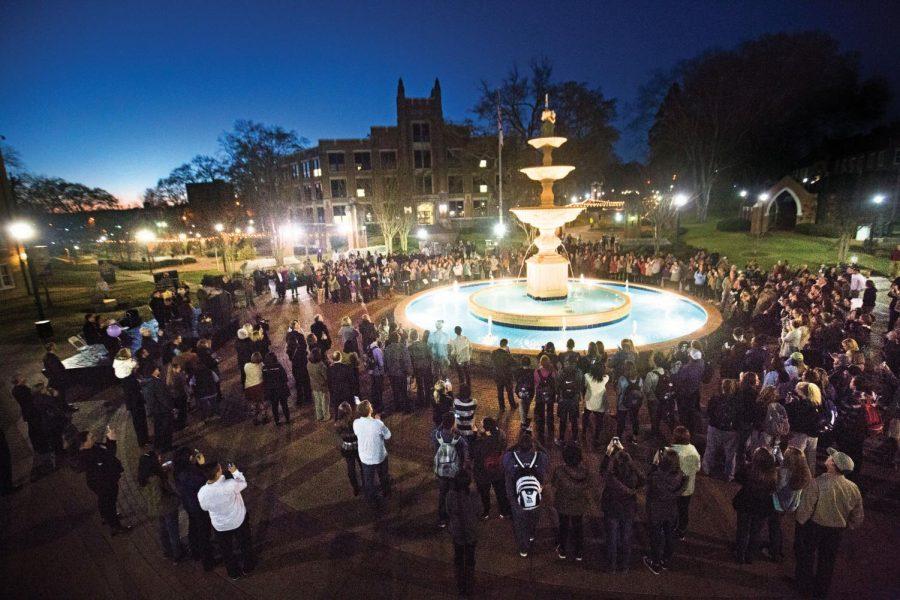Fountain wins top campus landmark honors
April 16, 2016
The Flor-Ala conducted a survey, and students voted the Laura M. Harrison Fountain winner of the best campus landmarks. The George Carroll Lion Habitat and the Memorial Amphitheater earned the second and third spots, respectively.
1. Laura M. Harrison Fountain
Laura M. Harrison Fountain is a splash of uniqueness on UNA’s campus. Many people take graduation, wedding and prom photos around the fountain. Each fall, UNA students observe the tradition of dipping pencils in its waters for good luck.
The fountain is named after 1955 graduate Laura Harrison. She and husband Donald Harrison gifted the fountain and Harrison Entrance to the campus in 2002, according to an article in UNA Magazine.
The Laura M. Harrison plaza represents her desire to support the university and provides a place of beauty for everyone to enjoy.
Students, faculty, staff and alumni celebrated the first Light the Fountain ceremony March 21.
Vice President for Student Affairs David Shields and Student Government Association President Nick Lang collaborated with the Departments of Grounds Maintenance and Facilities Administration and Planning to create a remote device to activate the lights and water in the fountain, according to a recent The Flor-Ala article.
2. George H. Carroll Lion Habitat
It all began 42 years ago, when Former UNA President Robert Guillot brought a 35-pound lion cub to live on campus.
“Since 1974, The University of North Alabama has been the only U.S. college whose mascots are live lions,” according to an article on roadsideamerica.com.
UNA dedicated the habitat Oct. 7, 2002, in honor and memory of the late owner of Pressure Concrete, Inc. George H. Carroll, whose firm constructed the space for the campus mascots, according to the Office of University Relations.
Pressure Concrete, Inc. donated labor and materials to the project and encouraged others to do the same.
Multiple individuals and businesses made contributions that led to the construction of the habitat.
“This Habitat was constructed under the exceptional leadership of President L. Potts, who was an active advocate and supporter of this project,” according to the George H. Carroll Lion Habitat “Facts in a Nutshell” pamphlet by Daniel Howard, former vice president of university advancement and administration.
FOX Sports named Leo III and Una No. 6 out of 25 best live animal mascots in the U.S. in October 2015.
3. Memorial Amphitheater
Grass, trees and benches surround the amphitheater. It is not hard to find students reading, talking, eating or napping around the amphitheater on a warm, sunny day.
The Florence community used the amphitheater beginning as early as 1836, according to the UNA World War I Memorials Pamphlet by Robert Steen, a former director of human resources and affirmative action at UNA. Locust Dell Academy students held their outdoor assemblies at the amphitheater, including the annual May Day program. Locust Dell Academy once stood where Willingham Hall stands today.
The creation of the stage occurred in 1919 when the college changed its name from LaGrange College to Florence State Teachers College and moved to its current location, according to the UNA World War I Memorials pamphlet.
A total of 288 State Normal School students left school to fight in World War I. The school lost six former students during the war. There are six columns on the amphitheater stage, and one of them honors all six students who died during the war.
Former faculty member Susan Jones Price suggested the construction of the amphitheater stage, according to a 1956 article in The Flor-Ala. Though her initial plan to have six pillars in honor of each of the six boys who died in the war did not happen, a plaque in front of the amphitheater honors her vision.












